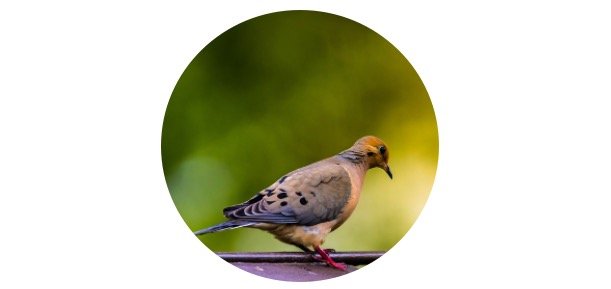What Do Carolina Wrens Eat? All You Need To Know
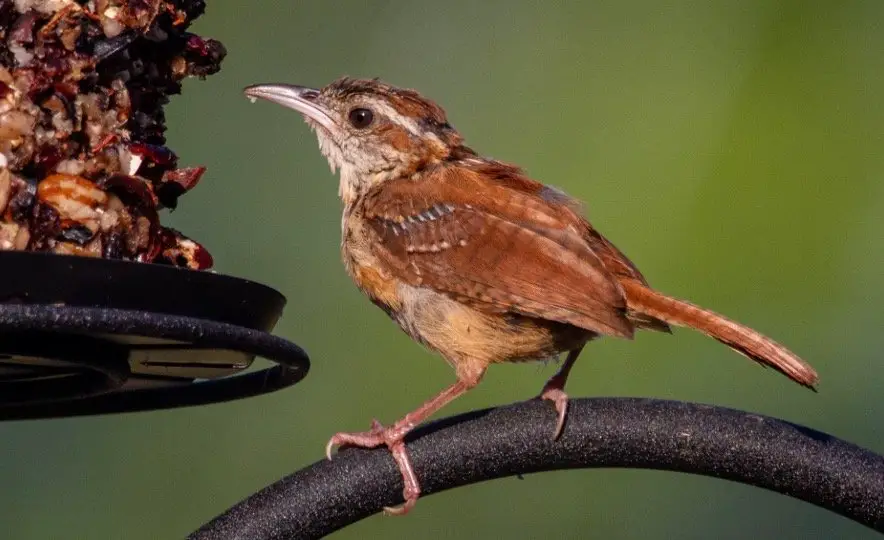
Table of Contents
What do Carolina Wrens eat?
The Carolina Wren (Thryothorus ludovicianus) was always thought to be a southern bird, but in the past century, it has increased its range northward (as far north as Canada in some cases), owing to global warming.
This northward march does provide some difficulties. Because the Carolina Wren does not migrate and spends the whole year in its established habitat, it must be prepared to withstand harder winters as it grows into lower climes.
While they can physically survive lower temperatures as long as they can locate appropriate food, keeping a healthy food source might be difficult. So, let’s get into it, what do Carolina Wrens eat?
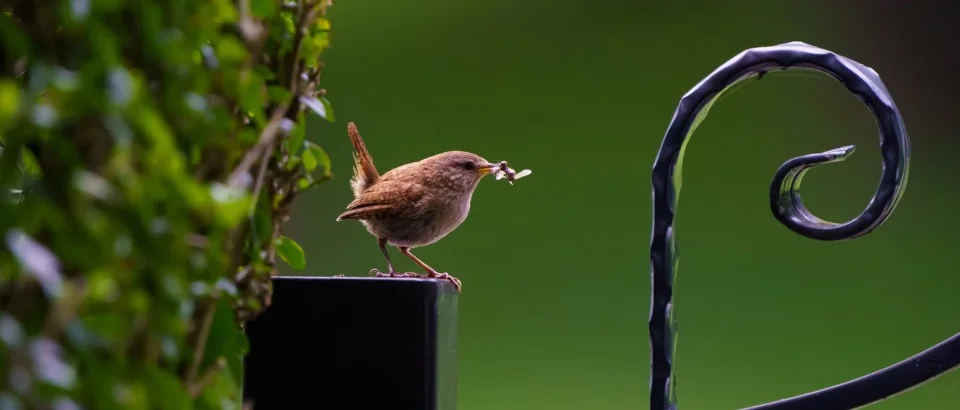
The Carolina Wren eats largely insects, spiders, and small vertebrates including frogs, lizards, and snakes. It also consumes seeds, nuts, berries, and other plant stuff. Professor Beal’s 1916 research found that the Carolina Wren’s diet consists of around 94% animal stuff and 6% vegetable matter.
Surprisingly, their numbers vary depending on the season. During the summer, the Carolina Wren’s diet consists of just 1% plant material, which increases to 11% in the winter. Common Animal Matter Sources in the Carolina Wren’s Diet:
- Spiders, like as Daddy Long legs, seem to be a delicacy for the Carolina Wren
- Moths and caterpillars
- Bean leaf bugs and cucumber beetles are examples of insects
- Ants
- Wasps and bees
- Crickets and grasshoppers
- Soldier bugs, Leaf Hoppers, and Cinch Bugs
- Snails
- Frogs of the forest
- Lizards
- Snakes Common Vegetable Matter Sources in the Carolina Wren’s Diet
- Acorns
- Seeds of Bayberry
- Seeds of Poison Ivy
- Seeds of Sumac
- Berries or fruits
- Seeds of Weed
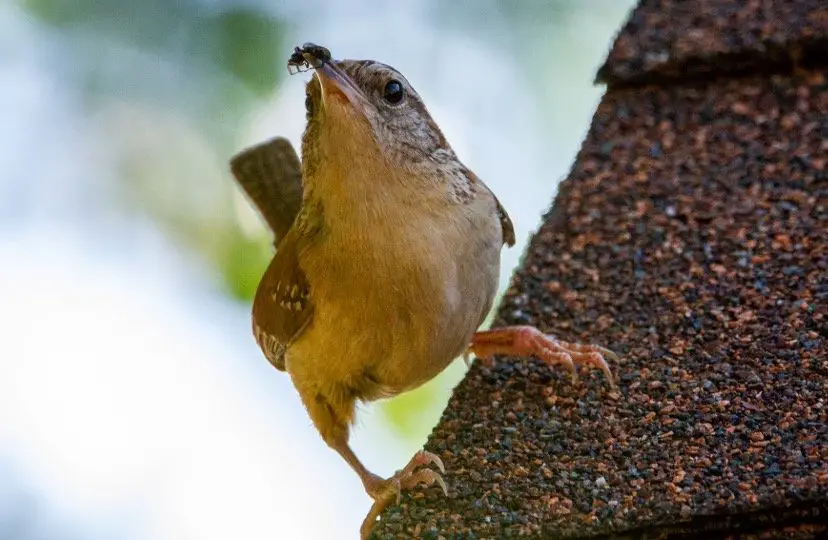
What seeds do Carolina Wrens eat?
Carolina Wrens consume seeds from natural weeds and flowers, which vary based on area and seed availability. In the wild, they have been seen eating bayberry, poison ivy, and sumac seeds.
Carolina Wrens have been seen eating sunflower seeds and may consume other seeds in wild bird seed mixes if supplied in feeders during the winter when their usual meal is not available.
What fruit do Carolina Wrens eat?
Carolina Wrens consume soft fruits endemic to the region in which they inhabit. They also consume a wide range of soft berries.
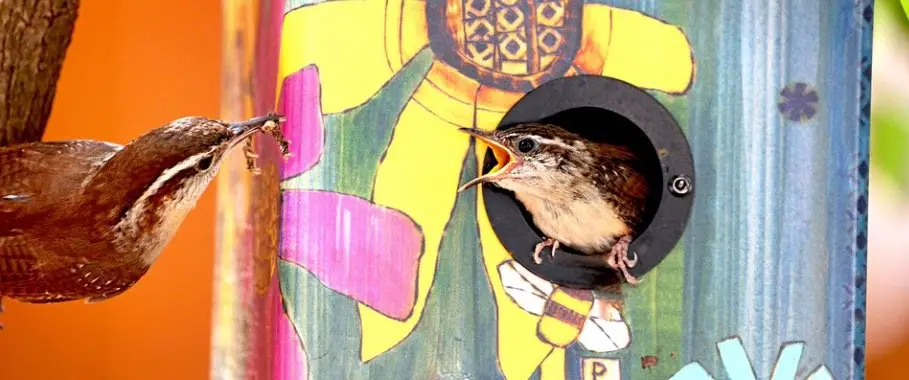
What do baby Carolina Wrens eat?
Both male and female Carolina Wrens are responsible for providing food to the hatchlings. This is usually made up of minute fragments of insects, spiders, and other creatures. As the youngsters develop, they bring greater parts to the nest and may bring grasshoppers, crickets, or caterpillars.
When the fledglings leave the nest, they frequently accompany their parents for a few days, during which the adults continue to feed the young birds until they are old enough to survive for themselves.
Where do Carolina Wrens feed?
Carolina Wrens forage for food in brushy regions, beneath trees, on the forest floor, and in densely forested thorny shrubs. They are mostly ground feeders, jumping from place to place and searching through leaf litter with their bent mouth to find bugs and insects.
They also graze in or near old bark on trees, fallen logs, and brush heaps, where spiders and insects are likely to be found.
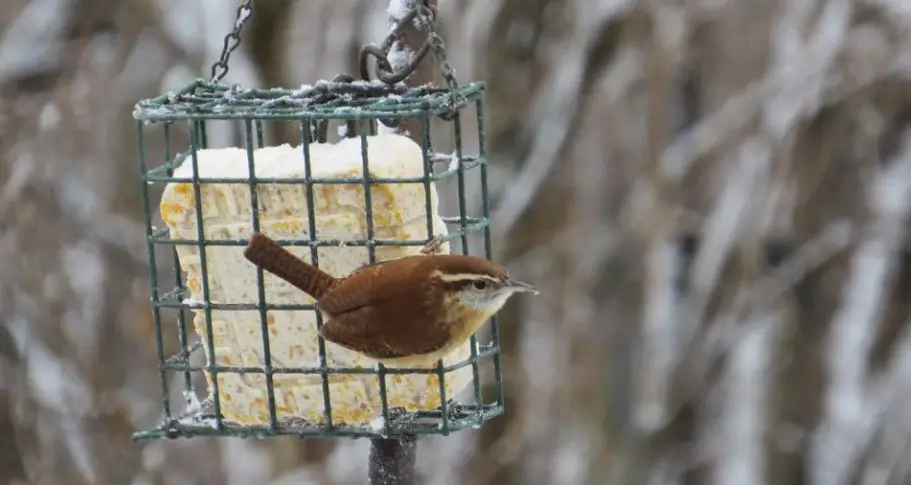
How does winter pose a problem for Carolina Wrens?
Carolina Wrens waste a lot of energy due to their continual mobility and high metabolic rate, which means they need a consistent and steady food supply only to keep their body temperature stable and avoid succumbing to the cold.
They may not be able to obtain enough food to maintain themselves on their own in the winter, particularly if there is snow on the ground. Many spiders and insects perish, tiny animals hibernate, and vegetation may be scarce.
All of this adds stress to a Carolina Wren’s existence, maybe more than they can bear on their own. The mortality rate is greater during cold periods.
What do Carolina Wrens eat in winter?
Carolina Wrens scavenge for accessible food throughout the winter, such as old berries and fruit. They also prey on old seed heads and nuts, such as acorns. During the winter, food supplies are often depleted.
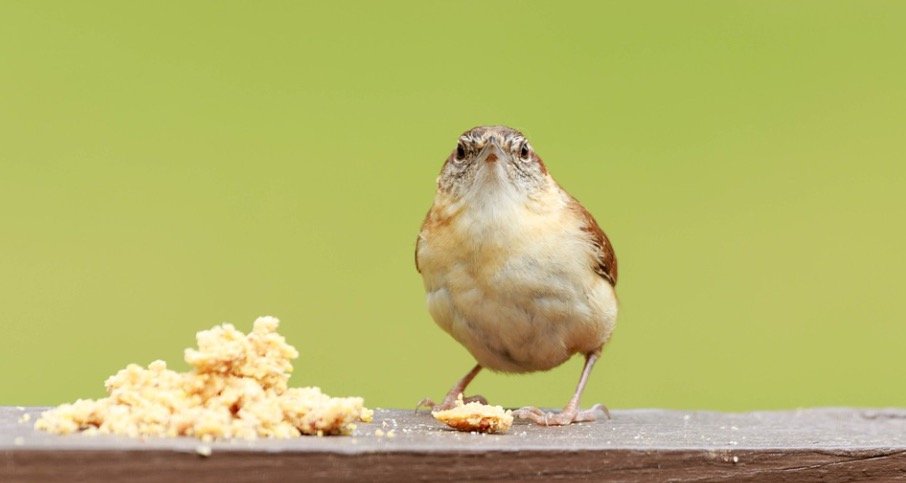
How can you help Carolina Wrens survive the winter?
Providing a consistent and predictable food supply for Carolina Wrens improves their winter survival chances. Although there is evidence that the Carolina Wren can and does adapt to new food sources, providing things they are known to eat is the best approach to assist.
Do Carolina Wrens eat from feeders?
Carolina Wrens may approach backyard feeders, particularly platform feeders, although they prefer to eat on or near the ground.
If Carolina Wrens avoid your current feeders, try distributing ground seeds and nuts underneath the feeders. Similarly, put suet feeders among shrubs and prickly plants where the Carolina Wren feels most at ease.
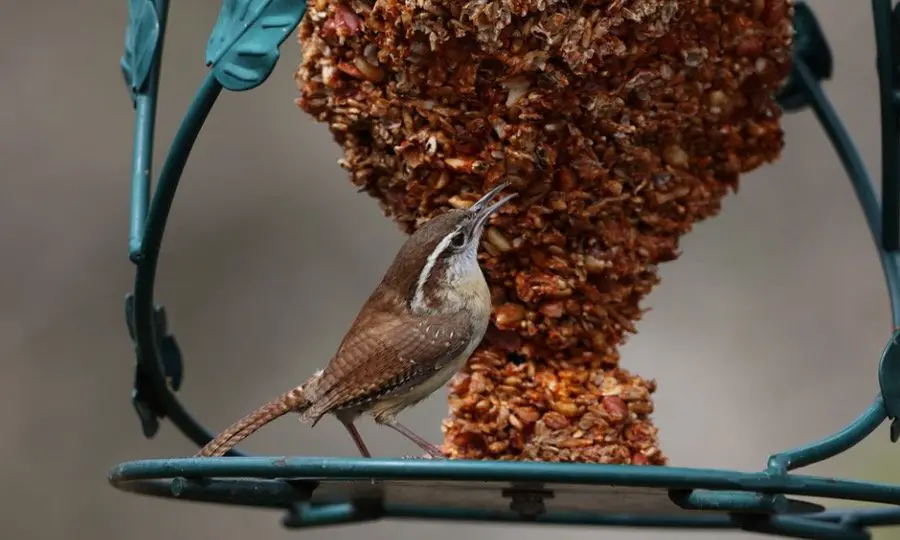
What do you feed Carolina Wrens?
Try to give a variety of food sources for Carolina Wrens, since some may favour one over another. Here are a few suggestions:
Sunflower Seeds: Although the Carolina Wren has been found to consume sunflower seeds, it is recommended to give them either sunflower kernels or sunflower hearts, which are a more practical size for the Carolina Wren to eat.
Suet: Select high energy suet that is high in both fat and protein. Suet comes in a variety of tastes, ranging from those flavoured with peanut butter to those flavoured with fruits and nuts. Examine the feeders carefully to see which kind of suet your Carolina Wrens like.
Dried Nuts and Berries: A variety of dried nuts and berries may be found in songbird seed mixtures.
Peanuts: Shelled peanuts or peanut hearts are favourites of Carolina Wrens. These are high in protein and fat, providing them with the energy they need. According to one source, one peanut may provide one-third of a Carolina Wren’s metabolic needs for the full day.

Do Carolina Wrens eat mealworms?
Many people believe that Carolina Wrens like mealworms and will gorge themselves on them. In the winter, feeding them mealworms at the bird feeder or in a shallow dish on the ground or near bushes where they visit provides them with a rich supply of protein.
If your Carolina Wrens aren’t eating the mealworms you give them, try soaking dry mealworms in warm water before giving them to them.
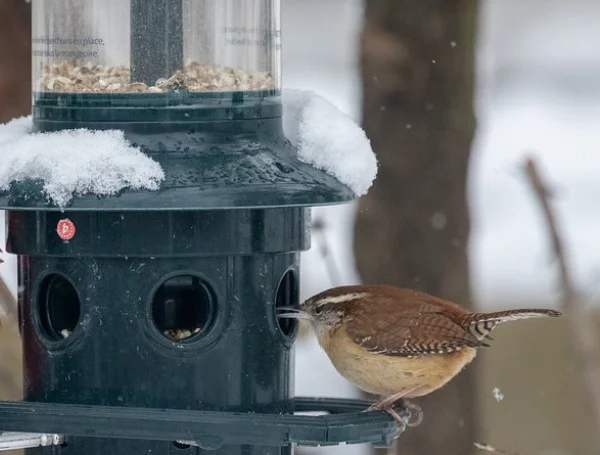
Other feeding tips
Because the Carolina Wren has seven subspecies, not every Carolina Wren will have the same dietary preferences or eating behaviours. Each subspecies may alter its diet and behaviour to fit the environment in which it lives.
This makes it critical to investigate the feeding habits of Carolina Wrens in your region to determine what works best for you. All birds need water to live, which may be difficult to locate in the winter.
In the winter, using a heated birdbath is a fantastic method to supply your Carolina Wrens with a source of fresh, clean water.
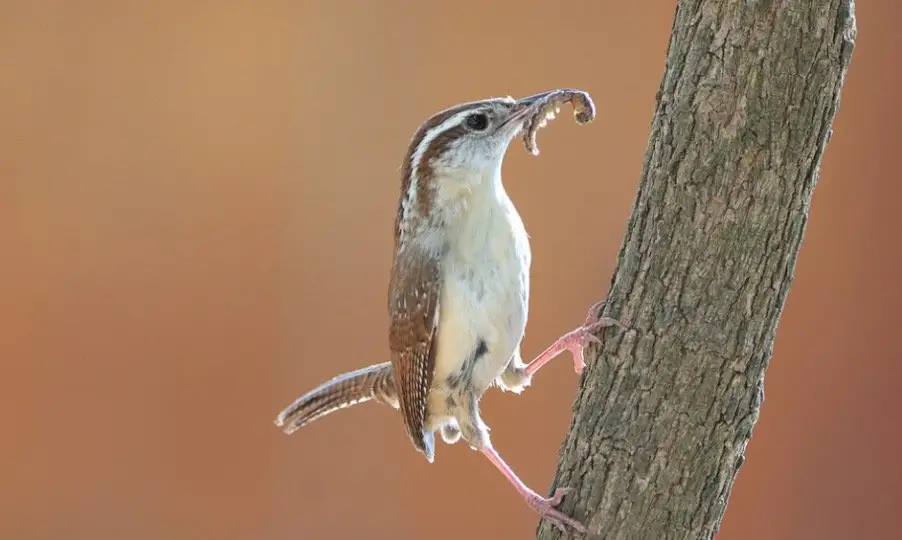
Interesting facts about Carolina Wrens!
The Carolina Wren is just 5.5 inches long from tip of beak to tip of tail, yet it possesses an incredible 11-inch wingspan. Carolina Wrens, both male and female, have a similar appearance. Their body colour is reddish-brown, with orange underparts.
The beak of the Carolina Wren is black and somewhat curved. It has a long tail that flutters up and down as it forages for food or flits through the bushes. Carolina Wrens have black eyes and pronounced white brow stripes.
It has a white or light tan face and chin. The Carolina Wren has a 6-year life expectancy. Carolina Wrens may build their nests in old plant pots, abandoned constructions, or bushes near the house.
Carolina Wrens are territorial and fierce when it comes to guarding their nests. To safeguard its nests, the breeding pair may hunt or peck predators or dive-bomb people.
Carolina Wrens are monogamous and will stay with the same spouse for several years. Carolina Wrens may be spotted fluttering between shrubs and other tiny plants, as well as hunting for food beneath leaves and other trash under trees.
They also jump up and down tree trunks, looking for insects under the bark or in fissures. They inhabit brush heaps and often seek for nesting locations near or in abandoned buildings. Because they do not migrate, the same Carolina Wrens will most likely stay in your yard all year.
